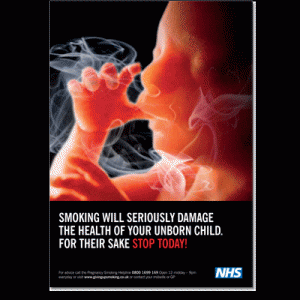
Ban advertising, promotion, sponsorship of tobacco
All forms of tobacco advertising, promotion and sponsorship should be banned
Advertising bans significantly reduce the numbers of people starting and continuing to smoke. Banning tobacco advertising and sponsorship is one of the most cost-effective ways to reduce tobacco use.
The tobacco industry is constantly trying new promotional tactics using nontraditional media to exploit advertising and promotion bans
Examples include:
handing out gifts and selling branded products such as clothing, in particular targeting young people
“stealth marketing” such as engaging trendsetters to influence people in places such as cafes and nightclubs
using online and new media, such as encouraging consumer interaction to design a new pack for a cigarette brand
placement of tobacco products and brands in films and television programmes, including reality TV and soap operas
corporate social responsibility activities such as donating to charity.
About one third of youth experimentation with tobacco occurs as a result of exposure to tobacco advertising, promotion and sponsorship.
Worldwide, 78% of young people aged 13-15 years report regular exposure to some form of tobacco advertising, promotion and sponsorship.
In the United States of America, smoking appears in 66% of movies rated PG-13. Adolescents are the most frequent moviegoers.
Young people aged 13-15 years are up to five times more likely than adults to be offered free cigarettes by a representative of a tobacco company.
Most people using tobacco products start doing so before the age of 20.
A comprehensive ban of all tobacco advertising, promotion and sponsorship is required under the WHO Framework Convention on Tobacco Control (WHO FCTC)
A comprehensive ban reduces tobacco consumption regardless of a country’s income level.
WHO's report on the global tobacco epidemic 2011 shows that only 19 countries (representing just 6% of the world’s population) have reached the highest level of achievement in banning tobacco advertising, promotion and sponsorship.
Call to action
WHO urges governments to ban all forms of tobacco advertising, promotion and sponsorship as part of the full implementation of the WHO FCTC and to be mindful of tactics used by the tobacco industry to evade these laws. Legislation should be properly enforced.
Charities and community projects should never accept tobacco industry support. Tobacco companies use corporate social responsibility activities to promote themselves as good corporate citizens, normalizing tobacco use and creating goodwill in the community.
Consumers should be alert to tactics used by tobacco companies to exploit advertising and promotion bans.

How important is smoking to the health of a human?
Smoking remains one of the leading causes of preventable illness, disability and premature death.
Saskatchewan has one of the highest cigarette smoking prevalence rates in Canada. Consistent with national trends, smoking prevalence is highest among 20-24 year olds. Prevalence of smoking among 15-19 year olds is higher in Saskatchewan than the national average.
How lethal is smoking to smokers?
Unless smokers quit, up to half of all smokers will die from their smoking, most of them before their 70th birthday and only after years of suffering a reduced quality of life.
Why does smoking kill?
Tobacco smoke contains more than 4,000 chemicals. Many are known to be harmful substances, including tar, nicotine, carbon monoxide, benzene, formaldehyde and hydrogen cyanide.
More than 50 of these chemicals cause cancer.
What keeps smokers smoking (and chewers chewing)?
Many smokers want to quit, but find it very difficult. Most former smokers made at least one unsuccessful quit attempt before finally succeeding and many had to try repeatedly
Nicotine is the drug in tobacco that makes smoking a powerful addiction. Experts rank nicotine ahead of alcohol, cocaine and heroin with regard to the severity of dependence resulting from its use.
Some users of smokeless tobacco (chewing tobacco and snuff) also find it very hard to quit.
Who is at risk from tobacco use?
While the health risks are highest among heavy smokers and long-term smokers, no user of tobacco escapes risk, including users of smokeless tobacco (chewing tobacco and snuff).
Young people who smoke or use smokeless tobacco are at immediate risk of a range of health problems, including nicotine addiction, increased cough, phlegm, and wheezing, reduced lung function and a worsening of problems from asthma.
Those who start to smoke at an early age are more likely to develop severe levels of nicotine addiction than those who start later, and they are at higher risk of health consequences in adult life.
As well, non-smokers, both children and adults, can be harmed by second hand tobacco smoke generated by other people's smoking.
What are the health risks faced by tobacco users?
Cardiovascular Diseases
Smoking is an known cause of heart disease, stroke, and diseases of the blood vessels. Many of these deaths are premature (before the age of 70).
Smoking is a major risk factor that contributes to a form of heart disease called cardiovascular disease. Cardiovascular disease is a major cause of death in Canada.
Smoking is a major risk factor for heart attacks and sudden cardiac death. Smoking also increases the risk of recurrence in persons who have survived a heart attack.
Smoking is also the most powerful risk factor for plaque formation (atherosclerosis) involving the arteries of the legs (peripheral vascular disease). This condition leads to leg pain, difficulty in walking, gangrene and, ultimately, loss of limb.
Cancers
Smoking causes cancer of the lung, oral cavity, pharynx, larynx, esophagus, pancreas, kidney, bladder and cervix. Recent evidence links smoking with cancer of large intestine and some forms of leukemia.
Most deaths from lung cancer are caused by smoking
Although other factors can cause lung cancer, smoking is responsible for the majority of all new cases of lung cancer in Canada.
Lung cancer is a highly lethal disease; only a small minority of patients are alive five years after diagnosis.
The causal relationship between smoking and cancers of the mouth, pharynx, larynx, and esophagus has been established for many years. Smokeless tobacco also causes cancer of the mouth.
Like all tobacco-caused diseases, the risk increases with amount and duration of smoking. Alcohol consumption is also a risk factor for these cancers, and the combination of alcohol consumption and smoking results in a greatly increased risk.
Recent studies confirm earlier findings of a strong link between smoking and cancer of the pancreas and with cancer of the kidney and bladder.
Findings also suggest that smoking may be a previously unrecognized cause of cancer of the large intestine (colorectal cancer) in both men and women. Evidence is also growing concerning a link between smoking and some forms of leukemia.
Respiratory Problems
Your lungs hold on to 85 to 99% of almost all of the things you inhale.
Respiratory problems can include increased coughing, phlegm, wheezing, chest colds and shortness of breath, even in smokers who smoke as little as one cigarette a week.
Effects in Pregnancy
Smoking is known to have an effect on babies before they are born.
Smoking has a direct effect on the growth of the fetus. The more the mother smokes during pregnancy, the lower the weight of the newborn infant. Smoking mothers give birth to infants who can weigh about 150 grams less than a term than non-smokers. Such babies, called "low birthweight" babies, are more likely to suffer adverse outcomes, including stillbirth, the need for special treatment in neonatal intensive care units and death in infancy.
During pregnancy, smokers have a greater risk of miscarriages. During the birth they are more likely to have complications. The chances of a baby's dying at birth or shortly thereafter are increased if the mother has smoked during pregnancy.
Nursing mothers can pass along harmful chemicals from cigarettes to their babies in breast milk.
Gastrointestinal Effects
Peptic ulcer disease is more likely to occur in smokers than in non-smokers. When ulcers are present, they heal less rapidly in smokers and are more likely to recur.
Evidence is accumulating that smoking is a risk factor for the occurrence of chronic bowel disease (Crohn's disease). As well, smoking may contribute to the recurrence of this disease.
Effects on Teeth and Gums
Tobacco use is an important factor in oral health, apart from its role in causing oral cancer. Smoking has also been linked to periodontal disease in younger people.
Other Effects
Several recent reports provide strong evidence of an association between smoking and osteoporosis (decreased bone density), which, in turn, predisposes a person to bone fractures. Smoking is independently associated with decreased bone density of the lumbar spine and hip, in both younger and older persons.
Smoking has been linked to sleep disturbance. Smoking is associated with difficulty in falling asleep and with symptoms suggestive of sleep fragmentation in both men and women.
Evidence of a link between cataracts and smoking continues to grow. An association may also exist between smoking and a type of thyroid disease (Graves' disease).
Smoking may be a detriment to physical fitness, even among relatively fit, young individuals. Smoking reduces the ability of the blood to carry oxygen and increases the heart rate and basal metabolic rate, thus counteracting the benefits of physical activity, including cardiovascular fitness.
Smoking decreases blood flow in the small vessels of the skin, perhaps damaging skin components, and leading to skin wrinkling and an appearance of premature aging in both men and women.
Are some brands less hazardous than others?
Low-yield cigarettes aren't necessarily less hazardous. Many smokers compensate for the lower tar and nicotine levels by smoking more cigarettes, taking more puffs on each cigarette smoked, inhaling more deeply, smoking more of the cigarette and blocking the air dilution vent holes on the filter with their lips or fingers.
The best bet for a person's health is to quit.
What about other types of tobacco?
Along with smoking there are other types of tobacco, including smokeless tobacco as well as chewing tobacco and snuff, that contain many of the same harmful and addictive substances as cigarettes, pipes and cigars. Smokeless tobacco is a major cause of cancer of the mouth and throat. Along with that it can also cause major dental problems such as recession of the gums, tooth loss and discoloration of the teeth and gums.






